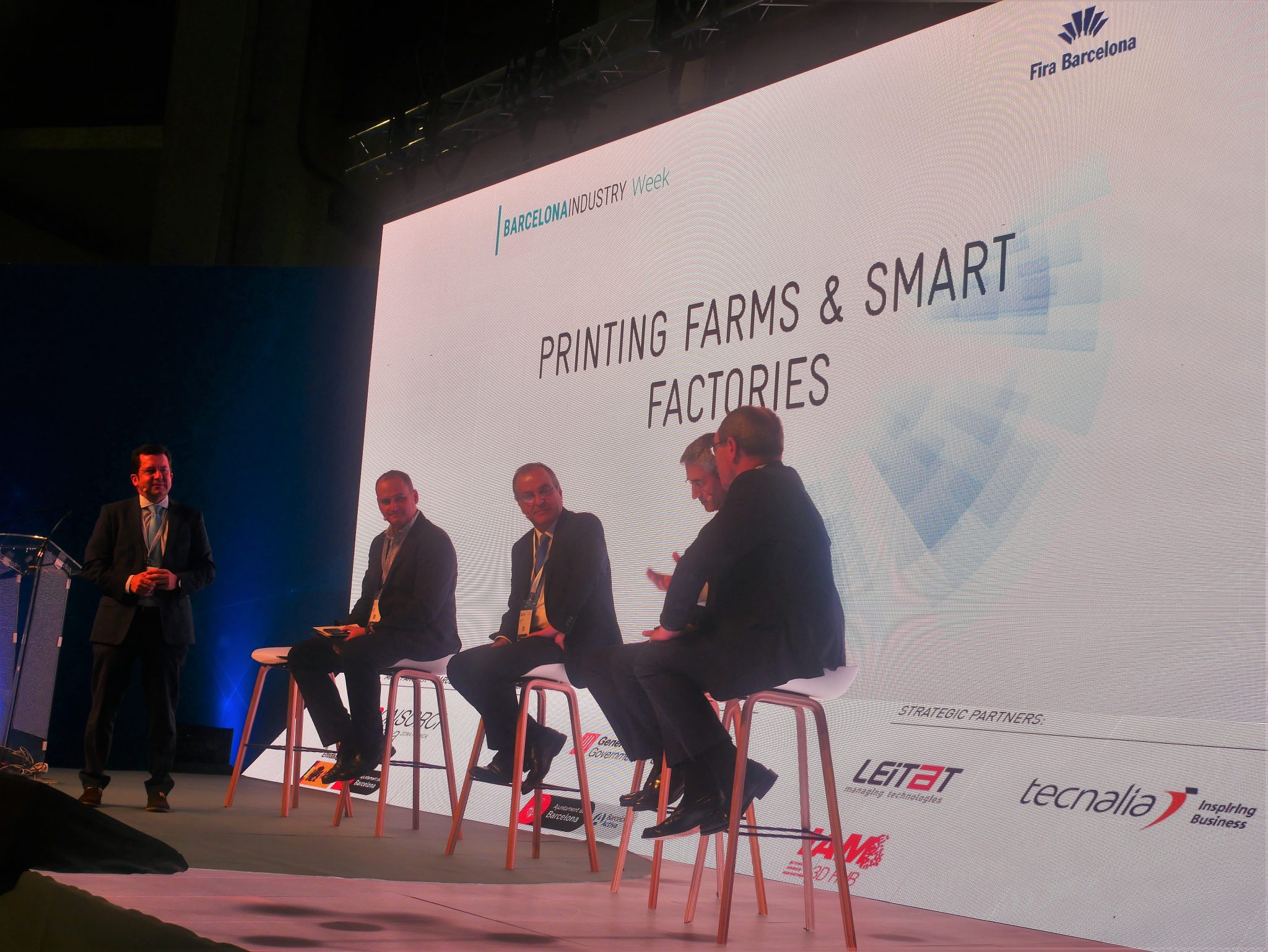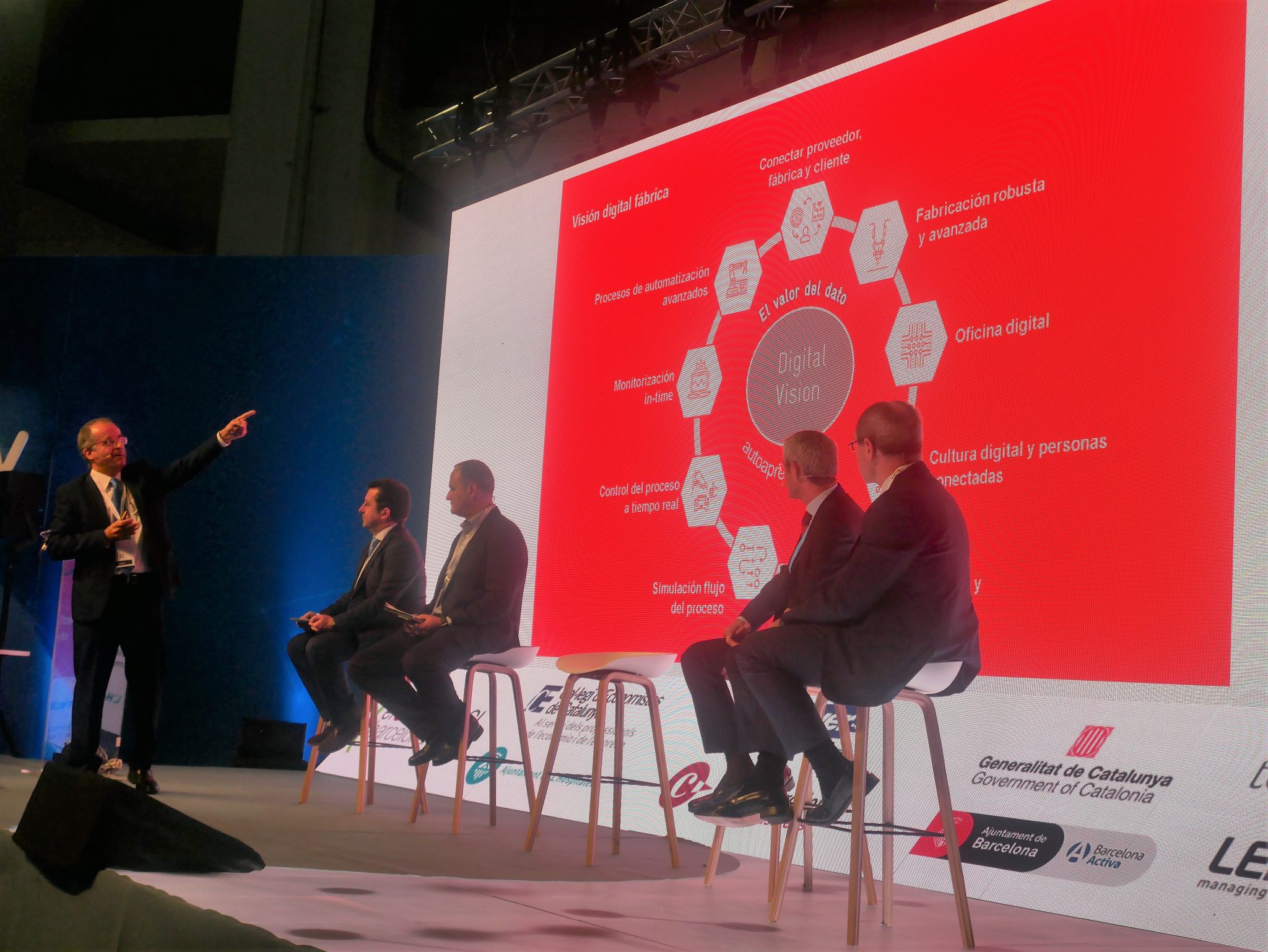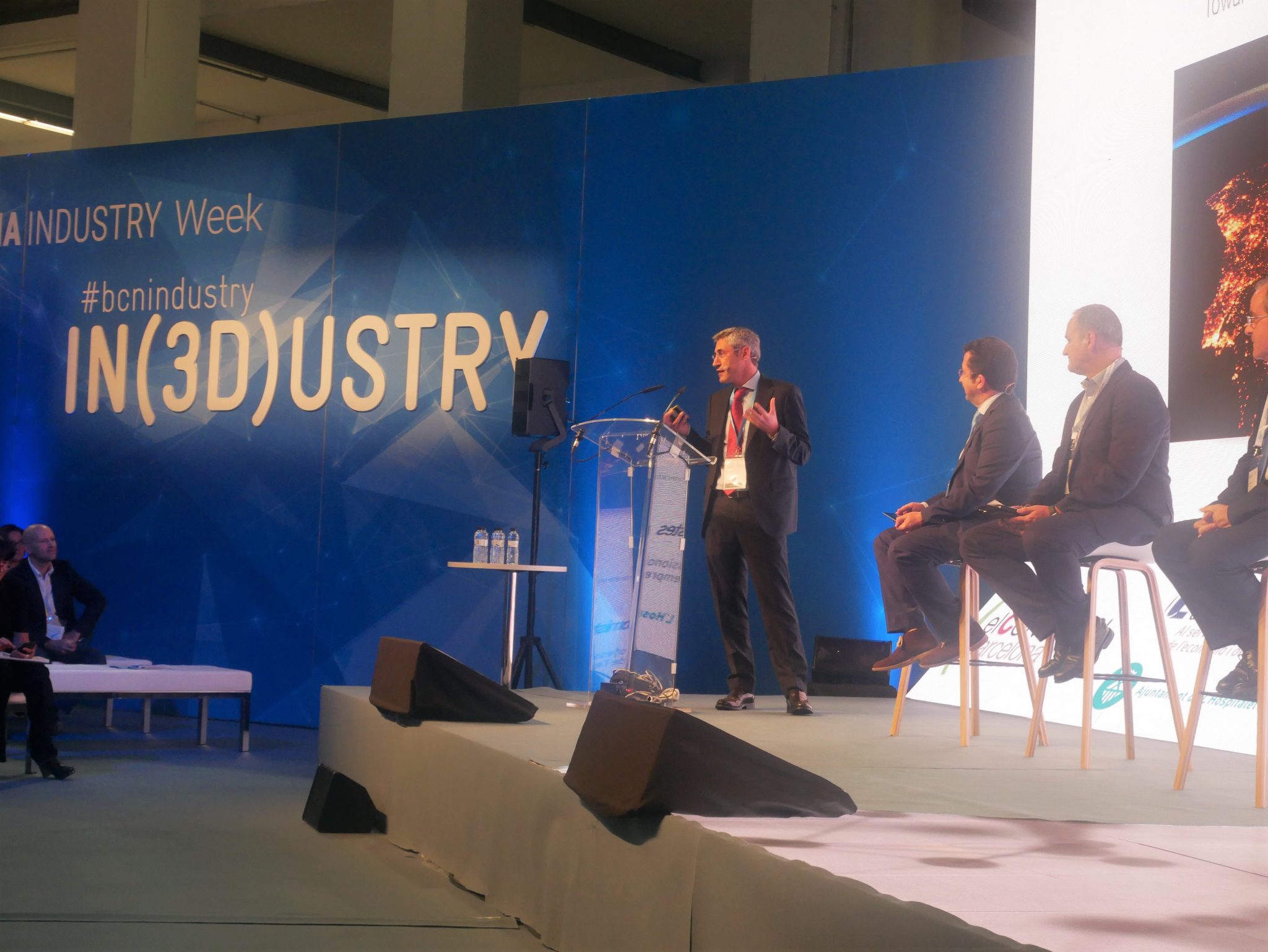As Barcelona Industry Week and IN(3D)USTRY: From Needs to Solutions Additive and Advanced Manufacturing Global Hub concludes, the future of 3D printing the path to industrialization shows promise.
With a focus on digitization and Industry 4.0, 3D Printing Industry sought to learn more on how such technologies work with additive manufacturing, by attending the IN(3D)USTRY talk “Printing Farms & Smart Factories.”
The following includes some of the insights made by Pedro Mier, Adviser and Member of the Board of Directors at Premo Group, Ignacio Artola Guardiola, Managing Director at Accenture, Ramón Paricio Hernández, Production Manager at SEAT, and Ramón Pastor, Vice President and General Manager of HP’s Large Format Printing.

Pedro Mier, Premo Group
“We all need to be adaptable to the new connectivity we are seeing in additive manufacturing. This includes AI, Big Data, and cloud computing, which are now at the tip of our fingertips. As a global leader in Innovative Magnetics, implementation of Industry 4.0 technologies has shown us a product success rate from 45% to 69%, particularly in automotive.
With three factories using a network based on cloud computing and radio prototyping, we have defined a production model that has offered us both speed and flexibility. This needs to be established by all companies wishing to leverage such technologies.
Our smart factories integrate the Form 2, which delivers high-resolution parts at a fraction of the cost of industrial 3D printers. With eight of these printers all connected, we can scale our prototyping and production in-house with desktop stereolithography. This is because we have the capabilities of printing eight different products in parallel. Also, our lead times have been reduced by three months as the idea to production phase can take just 48 hours.”

Ignacio Artola Guardiola, Accenture
“Manufacturing from scratch is possible thanks to additive manufacturing and its technologies. We as a community have the raw materials, the end-to-end security, the advanced software, therefore a smart factory is massively scalable. This change of paradigm can be unnerving for manufacturers which can halt Industry 4.0 related adoption. However, in order to evolve a value chain, IoT needs to be a priority.”
Ramón Paricio Hernández, SEAT
“In this digital era, we no longer have to depend on people, which is why the fourth industrial revolution is different from its predecessors. Within the automotive industry, SEAT acknowledges that cars are the main transportation solution and with this important realization, we must take manufacturing seriously.
The connectivity that collaborates with additive manufacturing is key to safe and lucrative mass production – it’s like a baker finding the perfect temperature for bread. That is why we are training our employees in digitization – to collaborate with our machinery for customization of parts, quality, and logistics.”

Ramón Pastor, HP
“How can we transform the industry to reinvent business models? It’s through the decentralization of production thanks to digitization; which is referred to as smart production. We need factories with time to market agility and that can bridge production and prototyping.
There is a growing trend where service bureaus are becoming smart factories through digital inventory, design optimization, and serial production through an increased investment in industrial hardware. Furthermore, we need to create more digital factories such as 3D Hubs, that give big manufacturers solutions using additive manufacturing.”

To stay up to date with all the latest 3D printing news sign up to our free newsletter, follow us on Twitter and like us on Facebook.
Looking for talent or a change of pace? Search and post 3D Printing Jobs for opportunities and new talent across engineering, marketing, sales and more.
Featured image shows the interior of IN(3D)USTRY. Photo by Tia Vialva.

